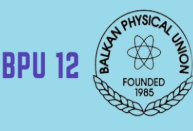https://doi.org/10.1140/epje/i2005-10034-6
Original Article
Photon channelling in foams
1
Fachbereich Physik, Universität Konstanz, D-78457, Konstanz, Germany
2
Institute for Advanced Studies in Basic Sciences, 45195-159, Zanjan, Iran
* e-mail: michael.schmiedeberg@uni-konstanz.de
Received:
9
May
2005
Accepted:
26
July
2005
Published online:
27
September
2005
Experiments by Gittings, Bandyopadhyay and Durian (Europhys. Lett. 65, 414 (2004)) demonstrate that light possesses a higher probability to propagate in the liquid phase of a foam due to total reflection. The authors term this observation photon channelling which we investigate in this article theoretically. We first derive a central relation in the work of Gitting et al. without any free parameters. It links the photon's path-length fraction f in the liquid phase to the liquid fraction ɛ. We then construct two-dimensional Voronoi foams, replace the cell edges by channels to represent the liquid films and simulate photon paths according to the laws of ray optics using transmission and reflection coefficients from Fresnel's formulas. In an exact honeycomb foam, the photons show superdiffusive behavior. It becomes diffusive as soon as disorder is introduced into the foams. The dependence of the diffusion constant on channel width and refractive index is explained by a one-dimensional random-walk model. It contains a photon channelling state that is crucial for the understanding of the numerical results. At the end, we shortly comment on the observation that photon channelling only occurs in a finite range of ɛ.
PACS: 05.40.Fb Random walks and Levy flights – / 82.70.Rr Aerosols and foams – / 42.68.Ay Propagation, transmission, attenuation, and radiative transfer – / 05.60.-k Transport processes –
© EDP Sciences, Società Italiana di Fisica and Springer-Verlag, 2005




